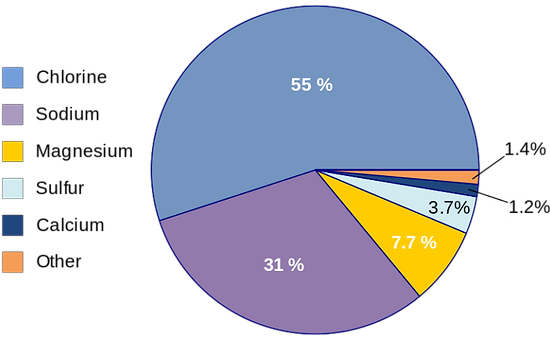
KNOW
THE OCEAN BEFORE YOU DIVE
PART I
-THE OCEANS AND THEIR SIGNIFICANCE
-BIOLOGICALLY REACH OCEANS
-LAYERS OF THE OCEAN
-OCEANS IMPACT ON THE CLIMET -COMPOSITION OF OCEAN WATER
-VERTICAL AND HORIZONTAL DIVISION
The oceans make up 70 percent of the planet and contains 97 percent of all the water on Earth. It also makes up the vast majority of water stores the majority of the planet’s moisture, terrestrial energy, and heat from the Sun. This energy is transferred between the equator and the two poles by larger surface currents by winds and deep ocean currents driven by differences in ocean density. It also provides the moisture and energy for storm systems and ultimately global climates. Phytoplankton, microscopic plants and animals in the oceans provide the foundation of the global food web of species. The earth’s oceans are so vital for life that over 40 percent of the world’s population live near coastal areas.
THE OCEANS AND THEIR SIGNIFICANCE

OCEANS OF THE WORLD
OCEANS IMPACT ON THE CLIMET
Earth would not be the same planet without its oceans. The oceans, along with the atmosphere, keep Earth’s surface temperatures fairly constant worldwide. Some places on Earth reach as cold as −7 degrees Celsius, whereas other places reach as hot as 55 degrees Celsius. Yet on other planets like Mercury, temperatures range from −180 degrees Celsius to 430 degrees Celsius.The oceans, along with the atmosphere, distribute heat around the planet. The oceans absorb heat near the equator and then transport that solar energy to polar regions. The oceans also moderate climate within a region. At the same latitude, the temperature range is smaller along coastal areas compared to areas farther inland. Along coastal areas, summer temperatures are not as hot, and winter temperatures are not as cold, because water takes a long time to heat up or cool down.
BIOLOGICALLY REACH OCEANS
The oceans are an essential part of Earth’s water cycle. Since they cover so much of the planet, most evaporation comes from the ocean and most precipitation falls on the oceans.The oceans are also home to an enormous amount of life. That is, they have tremendous biodiversity. Tiny ocean plants create the base of a food web that supports all sorts of life forms. Marine life makes up the majority of all biomass on Earth. (Biomass is the total mass of living organisms in a given area.) These organisms supply us with food and even the oxygen created by marine plants.
Oceans generate half of the oxygen we breathe and, at any given moment, they contain more than 97% of the world's water. Oceans provide at least a sixth of the animal protein people eat. Living oceans absorb carbon dioxide from the atmosphere and reduce climate change impacts. In addition it is the house of millions of species of under water creatures. Hence, its our responsibility to protect our ocean and the eco system in it.



COMPOSITION OF OCEAN WATER
Water is a polar molecule so it can dissolve many substances such as salts, sugars, acids, bases, and organic molecules. Where does the salt in seawater come from? As water moves through rock and soil on land it picks up ions. This is the flip side of weathering. Salts comprise about 3.5 percent of the mass of ocean water, but the salt content or salinity is different in different locations.In places like estuaries, seawater mixes with fresh water, causing salinity to be much lower than average. Where there is lots of evaporation but little circulation of water, salinity can be much higher.
The Dead Sea has 30 percent salinity nearly nine times the average salinity of ocean water. It is called the Dead Sea because nearly nothing can survive within it because of its salinity.
LAYERS OF THE OCEAN
In 1960, two men in a specially designed submarine called the Trieste descended into a submarine trench called the Challenger Deep (10,910 meters). The average depth of the ocean is 3,790 m, a lot more shallow than the deep trenches but still an incredible depth for sea creatures to live in. There are three major factors that make the deep ocean hard to inhabit: the absence of light, low temperature, and extremely high pressure.

LAYERS OF THE OCEAN
VERTICAL DIVISION
To better understand regions of the ocean, scientists define the water column by depth. They divide the entire ocean into two zones vertically, based on light level. Large lakes are divided into similar regions. Sunlight only penetrates the sea surface to a depth of about 200 m, creating the photic zone (consisting of the Sunlight Zone and Twilight Zone). Organisms that photosynthesize depend on sunlight for food and so are restricted to the photic zone. Since tiny photosynthetic organisms, known as phytoplankton, supply nearly all of the energy and nutrients to the rest of the marine food web, most other marine organisms live in or at least visit the photic zone. In the aphotic zone (consisting of the Midnight Zone and the Abyss) there is not enough light for photosynthesis. The aphotic zone makes up the majority of the ocean, but has a relatively small amount of its life, both in diversity of type and in numbers.
HORIZONTAL DIVISION
The seabed is also divided into the zones described above, but the ocean itself is also divided horizontally by distance from the shore. Nearest to the shore lies the intertidal zone, the region between the high and low tidal marks. This hallmark of the intertidal is change, where water is in constant motions from ocean waves, tides, and currents. The land is sometimes under water and sometimes is exposed. The neritic zone is from low tide mark and slopes gradually downward to the edge of the seaward side of the continental shelf. Some sunlight penetrates to the seabed here. The oceanic zone is the entire rest of the ocean from the bottom edge of the neritic zone, where sunlight does not reach the bottom.
